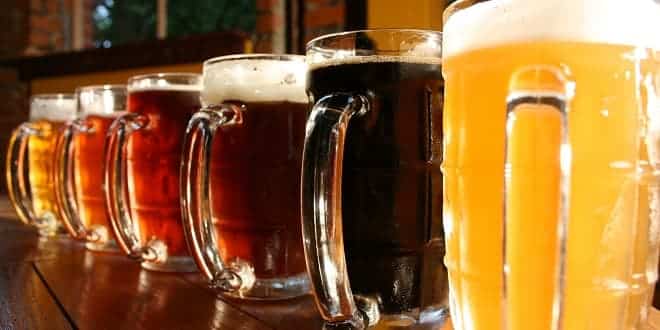Fermentasyon Teknolojisi
-

Fermentation Glossary
AMAZAKEA sweetener or refreshing drink made from cooked sweet rice and koji starter that has fermented into a thick liquid. Also spelled amasake.ASPERGILLUSA genus of molds used to inoculate beans and grains to make koji. Aspergillus is the starter for many Japanese fermented foods.BURDOCKA hardy plant that grows wild and is cultivated throughout the United States, as well as in Japan. The long, dark burdock root is delicious in soups, stews and vegetable dishes. It is highly valued in macrobiotic diets for its strengthening qualities. Burdock’s Japanese name is gobo.DAIKONA long, white…
-

Fermentation Lab Reports > Beer > Beer v5
The aim of this experiment to obtain the production of beer and to observe which type fermentation will take place bottom or top fermentation. Beer is known as the most common beverage in the world and it is produced from malted barley and some axuilary raw materials such as hops, adjunts. Basically, the production of beer has sıx steeps, which are; Malting – Mashing – Wort boiling – Fermentatıon – Filtration – Pasteurization and this step play important role while the making beer.And also the acidity and the pH play…
-

Fermentation Lab Reports > Beer > Beer v1
PURPOSE: In this experıment we examıned the productıon and fermentations of beer . We observed the type of fermentatıon which ıs top or bottom. THEORY: Yeast are single-celled microorganisms that reproduce by budding. They are biologically classified as fungi and are responsible for converting fermentable sugars into alcohol and other byproducts. There are literally hundreds of varieties and strains of yeast. In the past, there were two types of beer yeast: ale yeast (the "top-fermenting" type, Saccharomyces cerevisiae) and lager yeast (the "bottom-fermenting" type, Saccharomyces uvarum, formerly known as Saccharomyces carlsbergensis). Today, as a result of…
-

Fermentation Lab Reports > Cheese > Cheese v5
Cheese is defined as the fresh or matured product obtained by draining the whey after coagulating casein, the major protein in milk. The casein is coagulated by acid from selected m/o and / or by milk-clotting enzymes added to the milk. The resulting curd is cubed, cut, heated, drained and salted. Fresh and uncured cheese, such as cottage and cream, can be eaten immediately. Ripening or uncuring of the knitted or streched curd includes exposure to a temperature humıdıty controlled environment for a specified length of time. Changes during curing are bought about by specially selected…





